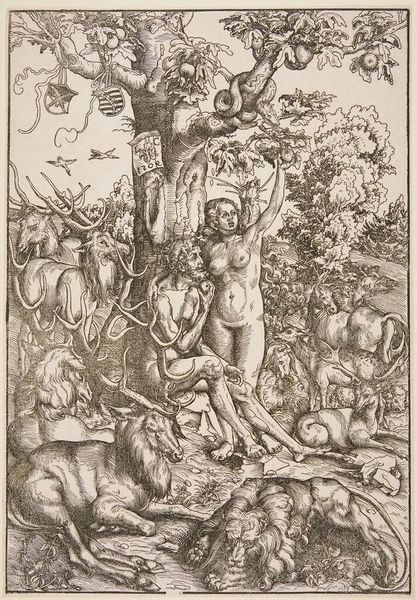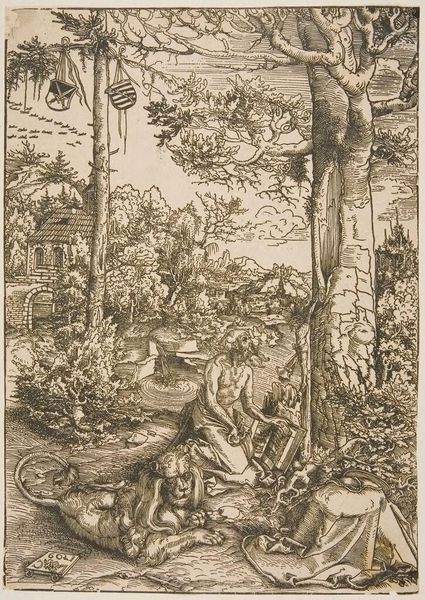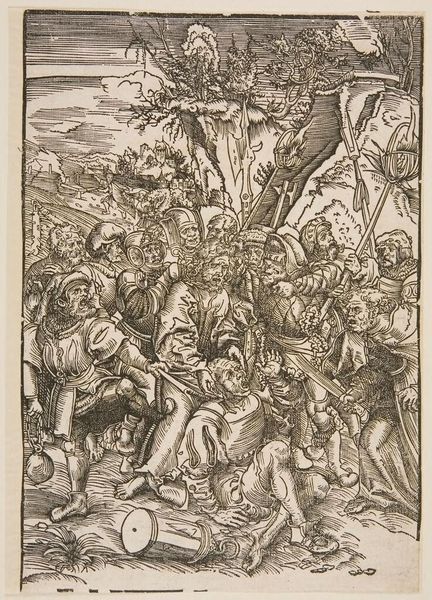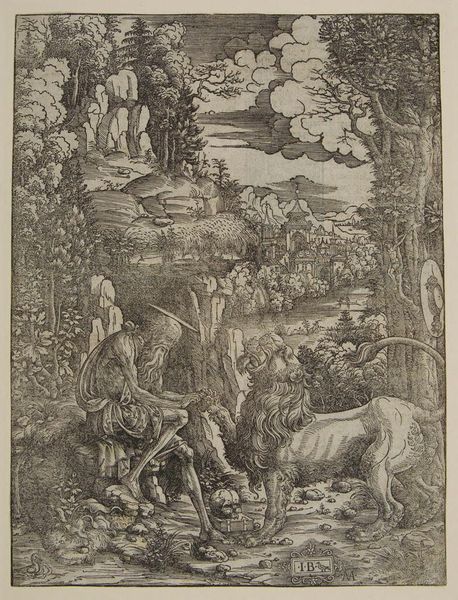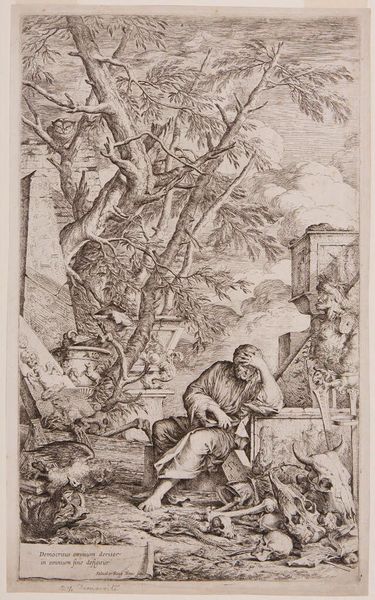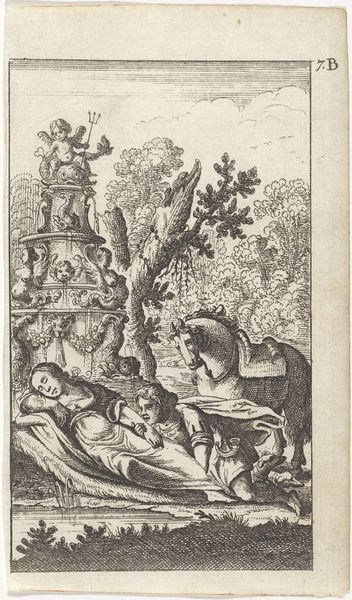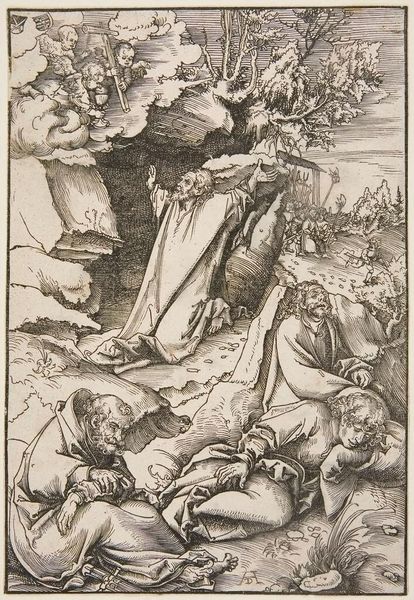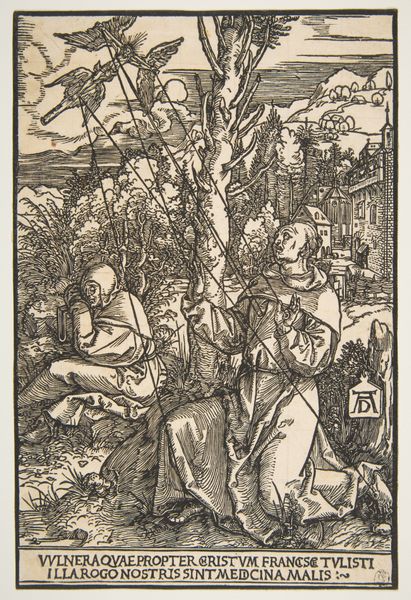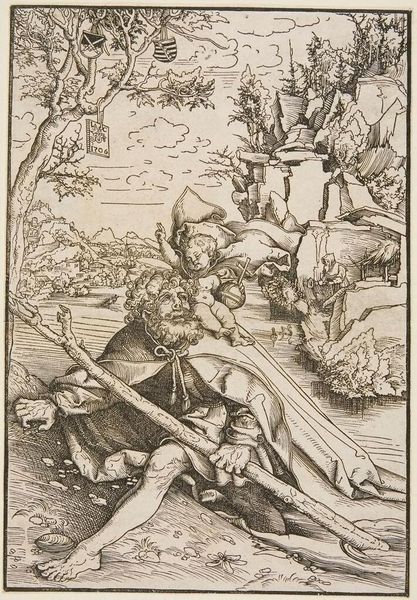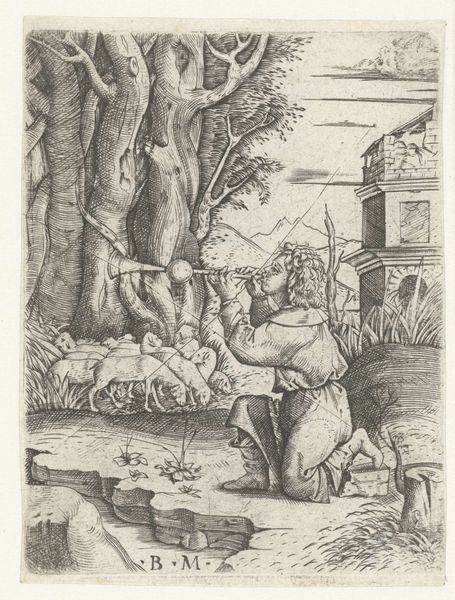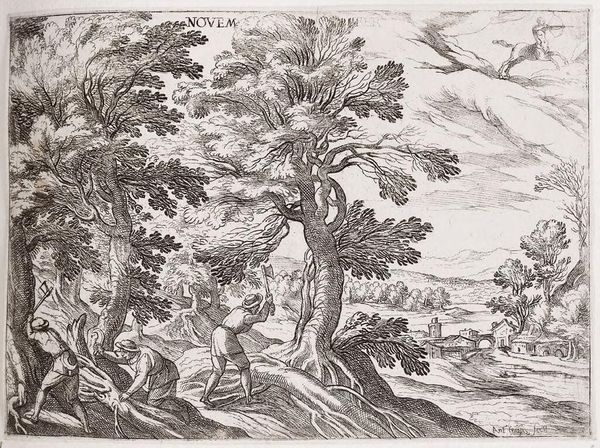
Copyright: CC0 1.0
Curator: Lucas Cranach the Elder created this print, "Rest in Egypt," sometime in the 16th century, now held at the Harvard Art Museums. Editor: It's incredibly charming, isn't it? A dense tapestry of figures nestled into a woodcut, creating a scene that is both peaceful and teeming with life. Curator: Absolutely. The image depicts the Holy Family's flight to Egypt, escaping Herod's persecution. Cranach, however, imbues it with a distinctly German Renaissance sensibility, filling the scene with frolicking putti and a fairytale-like forest. Note also the serpent emblem, a symbol that signals the Saxon Electorate's protection. Editor: It's interesting to see how political and religious symbolism blend together. It makes you wonder about the intended audience and the social context in which it was made. Was this meant as a devotional piece, a political statement, or both? Curator: Precisely. Consider the cultural memory embedded in the cherubs. They serve as both sacred imagery and a playful reimagining of innocence. Editor: The juxtaposition of the serene central figures with the riot of activity around them makes it a dynamic representation of a pivotal moment. Curator: A testament to art’s power to bridge the sacred and the secular, the political and the personal. Editor: Yes, and to consider how that blend resonates differently through time.
Comments
No comments
Be the first to comment and join the conversation on the ultimate creative platform.
